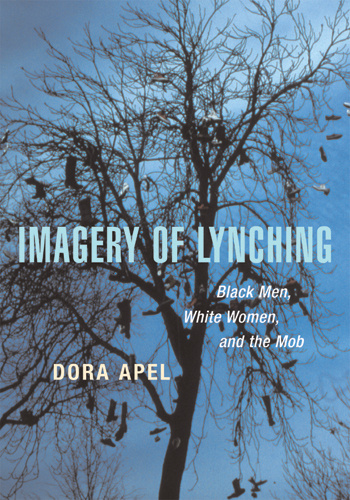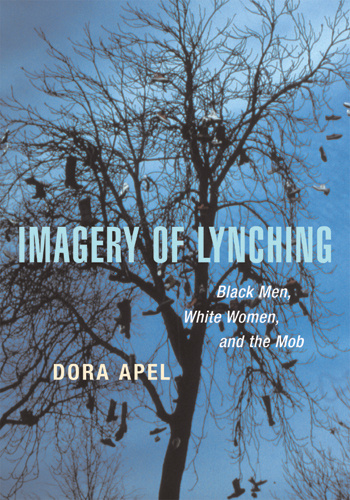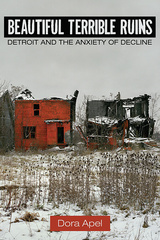
Outside of the classroom and scholarly publications, lynching has long been a taboo subject. Nice people, it is felt, do not talk about it, and they certainly do not look at images representing the atrocity.
In Imagery of Lynching, Dora Apel contests this adopted stance of ignorance. Through a careful and compelling analysis of over one hundred representations of lynching, she shows how the visual documentation of such crimes can be a central vehicle for both constructing and challenging racial hierarchies. She examines how lynching was often orchestrated explicitly for the camera and how these images circulated on postcards, but also how they eventually were appropriated by antilynching forces and artists from the 1930s to the present. She further investigates how photographs were used to construct ideologies of "whiteness" and "blackness," the role that gender played in these visual representations, and how interracial desire became part of the imagery.
Offering the fullest and most systematic discussion of the depiction of lynching in diverse visual forms, this book addresses questions about race, class, gender, and dissent in the shaping of American society. Although we may want to avert our gaze, Apel holds it with her sophisticated interpretations of traumatic images and the uses to which they have been put.
In concise and compelling language, Dora Apel traces the origins and histories of images of lynching in order to foreground their role in both normalizing and challenging particular concepts o racial and national identity. She forces us to look at scenes most would prefer to ignore, and exposes the horror and logic of torture. At a time when grotesque deaths are increasingly framed as 'entertainment' by today's news media, Apel's book is a sober reminder of the political expediency and personal pain behind such graphic displays.
Apel has written an important book. It synthesizes the history of spectacle lynching and dissects the photographs and artworks used to sustain and challenge racial violence. It contributes to understanding the symbolic and ideological power of these images for past--and present. Imagery of Lynching is a must read for anyone interested in racial violence in the United States.
Apel has written a very engaging study on a difficult part of American visual history. She has succeeded in using a case study format to thoroughly address the breadth of social, political, and economic issues that have affected lynching and its representation in the last century....Apel offers astute analyses of an array of documentary and fine art images, revealing how they have reflected and influenced American attitudes about race, racism, sexuality, mob violence, and their pathology....Highly recommended.'
The visuals in Imagery of Lynching are disturbing and graphic, but deserve the reader's attention. Apel painstakingly and effectively discusses the strength of these images and details the controversies that often followed their public displays.'
This book makes a major contribution to the scholarship on both lynching and the artistic representation of racism in the United States. It will undoubtedly be a foundational work for subsequent research by historians and art historians alike.
[Apel's] book provides an important complement to social and political studies of lynching that generally ignore the role of the artist in attempting--however futilely--to awaken the public conscience.'
Dora Apel mounts a careful and convincing analysis of a set of extremely difficult, often literally terrifying, images and provides the necessary contexts for readers to understand the practice of lynching and the terms of its representation by photographers and artists.
Scottsboro, the Communist party, and the NAACP: conflicts and desires
The antilynching exhibitions of 1935: strategies and constraints
Race, sex, and politics in prewar America: picturing Black oppression
Mass media, World War II, and the Cold War: the lynching of George Dorsey and Emmitt Till
The evolution of lynching narratives in contemporary art





